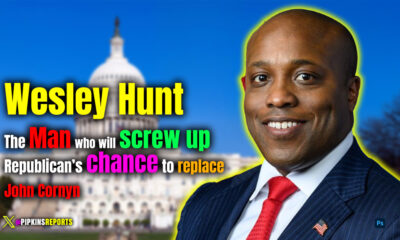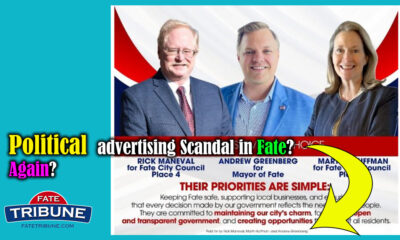Election polls are 95% confident but only 60% accurate, Berkeley Haas study finds
Analysis of 1,400 polls from 11 election cycles found that the outcome lands within the poll’s result just 60% of the time.
26-Oct-2020 4:25 PM EDT, by University of California, Berkeley Haas School of Business
Newswise — How confident should you be in election polls? Not nearly as confident as the pollsters claim, according to a new Berkeley Haas study.
Most election polls report a 95% confidence level. Yet an analysis of 1,400 polls from 11 election cycles found that the outcome lands within the poll’s result just 60% of the time. And that’s for polls just one week before an election—accuracy drops even more further out.
“If you’re confident, based on polling, about how the 2020 election will come out, think again,” said Berkeley Haas Prof. Don Moore, who conducted the analysis with former student Aditya Kotak, BA 20. “There are a lot of reasons why the actual outcome could be different from the poll, and the way pollsters compute confidence intervals does not take those issues into account.”

<<< Probability and Statistics Games for Kids >>>
Many people were surprised when President Donald Trump beat Hillary Clinton in 2016 after trailing her in the polls, and speculated that polls are getting less accurate or that the election was so unusual it threw them off. But Moore and Kotak found no evidence of declining accuracy in their sample of polls back to 2008—rather, they found consistently overconfident claims on the part of pollsters.
“Perhaps the way we interpret polls as a whole needs to be adjusted, to account for the uncertainty that comes with them,” Kotak said. In fact, to be 95% confident, polls would need to double the margins of error they report even a week from election day, the analysis concluded.
As a statistics and computer science student on an undergraduate research apprenticeship in Moore’s Accuracy Lab during the 2019 presidential primary, Kotak grew curious about the confidence intervals included with polls. He noticed that polls’ margin of error was frequently mentioned as a footnote in news articles and election forecast methodologies, and he wondered whether they were as accurate as their margins of error implied they should be.
Kotak brought the idea to Moore, who studies overconfidence from both a psychological and statistical perspective. Much of the research on polling accuracy considers only whether the poll correctly called the winner. To gauge poll confidence, they decided to take a retroactive look at polls based on how long before an election they were conducted, and consider not whether a candidate won or lost, but whether the actual share of the vote fell within the margin of error the poll had reported. For example, if a poll showed that 54% of voters favored a candidate, and it had a 5% margin of error, it would be accurate if the candidate garnered 49% to 59% of the vote, but would be a miss if the candidate won with more than 59% of the vote (or less than 49%).
Moore and Kotak obtained 1,400 polls conducted ahead of the general elections of 2008, 2012, and 2016, as well as the Democratic presidential primaries in Iowa and New Hampshire from 2008 and 2016 and the Republican primaries in the same states from 2012 and 2016. Because some polls asked about multiple candidates, the sample included results of over 5,000 surveys of how people said they’d vote on particular candidates, as well as the accompanying margins of error.
Analyzing the polls in seven-day batches, they found a steady decline in accuracy the farther from an election the poll was conducted, with only about half proving to be accurate 10 weeks before an election. This makes sense, since unforeseen events occur—such as former FBI director James Comey announcing an investigation into Clinton’s emails just a week before the 2016 presidential election. Yet most polls, even weeks out, reported the industry standard 95% confidence interval.
Sampling error and confidence intervals
The confidence interval quantifies how sure one can be that the sample of people surveyed reflects the whole voter population. A 95% confidence interval, for example, means that if the same sampling procedure were followed 100 times, 95 of those samples would contain the true voter population. Therein lies the problem, however.
The confidence level takes into account “sampling error,” a statistical term that quantifies how likely it is that by pure chance, the sample varies from the larger population of voters from which the sample was drawn. For example, not surveying a large enough group of voters would increase the sampling error. But sampling error does not include any other kinds of errors—such as surveying the wrong set of people to begin with.
“People often forget that margins of error for polls only capture the statistical sources of error,” said David Broockman, an associate professor in Berkeley’s Department of Political Science. “This analysis shows just how large the remaining non-statistical sources of error are in practice.”
Added Prof. Gabriel Lenz, also of Berkeley Political Science, “This is a fascinating analysis, and future work could sort out the sources of the inaccuracy, such as low-quality pollsters, difficulty screening likely voters, last-minute changes in voter intentions, and more.”
It’s easy to take sampling error into account in polling statistics, but much harder to account for all the other unknowns, Moore said. It’s a lesson that goes far beyond polling.
“Because we base our beliefs on imperfect and biased samples of information, sometimes we will be wrong for reasons that we did not anticipate,” he said.

Featured
Texas Braces for “No Kings” Protests on October 18 – Areas to Avoid
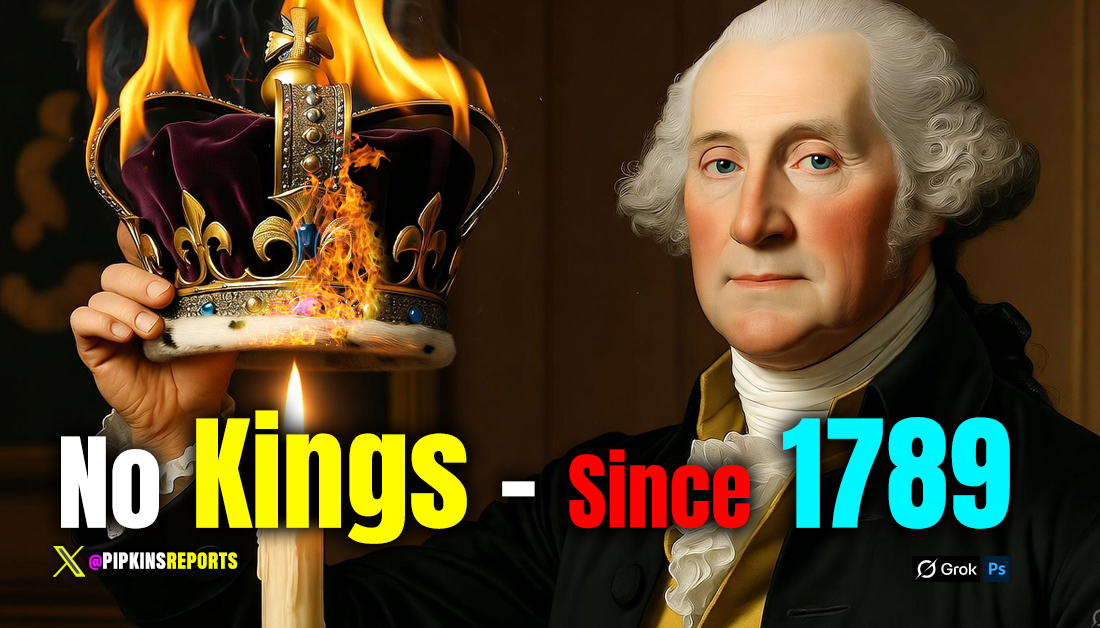
As Texas gears up for a wave of nationwide “No Kings” protests scheduled for Saturday, October 18, residents in major cities across the state are advised to steer clear of key downtown and civic areas to avoid potential disruptions, traffic snarls, and heightened security measures. The anti-authoritarian demonstrations, organized under the banner of opposing perceived executive overreach by President Donald Trump, are expected to draw crowds echoing the large turnouts seen in June. While organizers promote peaceful assembly, past events have occasionally spilled into street closures and increased police presence.
The “No Kings” movement, which frames itself as a grassroots push against authoritarianism, has ties to left-wing groups including Indivisible and, according to state officials, Antifa networks previously designated as domestic terrorists by President Trump. Protests are slated in at least eight Texas locales, focusing on central hubs like city halls, parks, and capitol grounds. Here’s a rundown of the hot spots to sidestep:
| City | Location/Details | Time Window | Notes |
|---|---|---|---|
| Houston | March from Houston City Hall; Rally at Discovery Green (1500 McKinney St) | Noon–2 p.m. (rally); ~2 p.m. start (march) | Downtown core; expect pedestrian crowds and possible road blocks. |
| Houston (Suburbs) | The Woodlands (Lake Woodlands Dr & Six Pines Dr); La Porte City Hall (604 W Fairmont Pkwy) | 10 a.m.–1 p.m. (The Woodlands); 10 a.m.–Noon (La Porte) | Satellite events in suburban civic spots; lighter traffic but monitor local alerts. |
| San Antonio | Travis Park | 4–6 p.m. | Downtown landmark; anticipate street closures and elevated foot traffic. |
| Dallas | Pacific Plaza (401 N Harwood St) | Noon–3 p.m. | Central business district; business commuters should plan alternate routes. |
| Austin | Meet at Texas State Capitol, march ~1 mile to Auditorium Shores | 2 p.m. start | Traverses downtown; riverfront park finale could draw lingering crowds. |
| Fort Worth | 501 W 7th St | 11 a.m.–3 p.m. | 7th Street corridor in downtown; entertainment district vibe with protest overlay. |
| Arlington | Arlington Sub Courthouse (700 E Abram St) | 10 a.m.–Noon | Civic center area; near courts, potential for quick law enforcement response. |
| Plano | NE corner of Preston & Parker Rd (near Wells Fargo Bank) | 10 a.m.–Noon | Commercial intersection; suburban but busy with shoppers and drivers. |
| Laredo | Jett Bowl North | 10 a.m.–Noon | Local rec landmark; public gathering spot in a border community. |
These sites were compiled from announcements by organizers and local media reports. There will be many more protests in cities of all sizes. Authorities urge the public to check city traffic apps and news updates for real-time detours.
SIDELINE: Abbott Mobilizes Guard and DPS to Safeguard Austin
In a preemptive strike against potential unrest, Governor Greg Abbott has ordered the deployment of the Texas Department of Public Safety (DPS) and the Texas National Guard to Austin, where the democrat run city is expected to be the hub of the most violent and extreme protesters. The move, announced Friday, targets the capital city’s planned march amid concerns over links to Antifa groups, which President Trump recently labeled a domestic terrorist organization.
“Violence and destruction will never be tolerated in Texas,” Abbott stated in a release from his office. The surge includes state troopers, Special Agents, Texas Rangers, aircraft surveillance, and tactical assets, coordinated with the state’s Homeland Security Division to scan for extremist ties. This echoes a similar summer operation around the Capitol during prior demonstrations.
Local law enforcement will collaborate on arrests for any acts of violence or property damage, emphasizing deterrence over confrontation. Austinites near the Capitol or Auditorium Shores should prepare for a visible security footprint.
Behind the scenes, the “No Kings” push has drawn scrutiny for its funding streams, with reports pointing to deep-pocketed backers like George Soros’ Open Society Foundations (nearly $8 million to Indivisible since 2017), the Arabella Advisors network (over $114 million to affiliates from 2019–2023), and billionaire donors such as Hansjörg Wyss and Walmart heiress Christy Walton. While much of this support flows through dark-money channels for broader civic engagement, critics argue it amplifies protest logistics and messaging.
As the sun sets on these gatherings, it’s worth a final nod to the movement’s own rallying cry: There are no kings in America. And Donald Trump doesn’t see himself as one—for if he did, he wouldn’t allow protests like this to occur in the first place. Stay safe, Texas.
Election
The Lone Star Freedom Project: Rick Perry’s Dark Money Machine Boosting John Cornyn
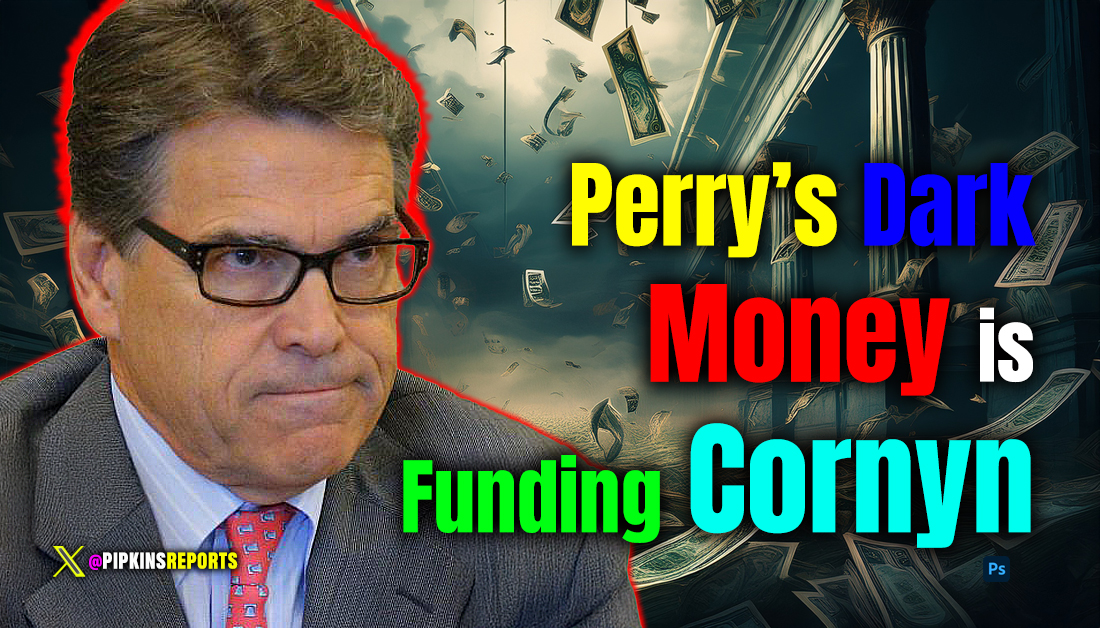
Washington DC – In the heat of Texas politics, as the 2026 Senate primary looms, voters across the state have been bombarded with a barrage of television and digital ads portraying U.S. Senator John Cornyn as a steadfast ally of President Donald Trump. These spots, flooding airwaves in key markets like Dallas-Fort Worth and Houston, aren’t the work of Cornyn’s official campaign. Instead, they originate from a shadowy newcomer: the Lone Star Freedom Project, a freshly minted 501(c)(4) nonprofit chaired by former Texas Governor Rick Perry.
Launched just weeks ago, this group has already funneled and estimated $260,000 into Dallas-Fort Worth media buys and $40,000 in Houston, all in a bid to shore up Cornyn’s image amid a brewing challenge from Texas Attorney General Ken Paxton. But beneath the glossy pro-Cornyn messaging lies a web of undisclosed funding and deep-rooted political alliances, raising questions about who—or what—is truly pulling the strings.
A Star-Studded Board, But Opaque Origins
The Lone Star Freedom Project burst onto the scene in early October 2025, positioning itself as a vehicle for “social welfare” in the Lone Star State. Its website, which went live around October 1, proudly lists Perry as chair, flanked by a roster of Texas heavyweights. Perry, the 47th Governor of Texas from 2000 to 2015 and briefly U.S. Secretary of Energy under Trump, brings political clout. His assentation from state House representative to agriculture commissioner, and ultimately to the governorship after succeeding George W. Bush.
Joining Perry are Susan Combs, a former Texas Comptroller and the state’s first female Agriculture Commissioner, who later served as Assistant Secretary for Policy, Management, and Budget at the U.S. Department of the Interior. Combs, now a fellow at the University of Texas Center for Identity and treasurer of the Women’s Suffrage National Monument Foundation, oversees a sprawling West Texas family ranch.
Claire Brickman, a University of Texas and Southern Methodist Law alum, rounds out the legal muscle with stints at the Department of Justice and as a state prosecutor. And then there’s Marcus Luttrell, the Houston-born Navy SEAL hero of Lone Survivor fame, a recipient of the Navy Cross and Purple Heart for his harrowing survival in Afghanistan’s Operation Red Wings.
On paper, it’s an all-star team of conservative credentials. Incorporated as a Delaware, not Texas, domestic corporation on June 25, 2025—just months before its ad blitz—the group claims 501(c)(4) status, allowing it to operate as a tax-exempt social welfare organization. Yet, for all its Texas pride, the project’s rapid formation and immediate dive into partisan advertising smack of strategic timing, especially as Perry has publicly lumped his endorsement of Cornyn with support for other GOP establishment figures like former Texas House Speaker Dade Phelan.
The Dark Money Veil: Unlimited Funds, Zero Transparency
What truly sets the Lone Star Freedom Project apart—and fuels its suspicious aura—is its 501(c)(4) designation. Under IRS rules, these “social welfare” nonprofits can engage in political activities, including unlimited independent expenditures on ads, as long as such efforts aren’t their “primary” purpose. The catch? They aren’t required to disclose donors, earning them the moniker “dark money” groups. Unlike super PACs or 527 organizations, 501(c)(4)s like this one can hoover up unlimited cash from individuals, corporations, unions, or even foreign nationals (if carefully crafted)—without ever revealing the sources.
This loophole is particularly alarming for foreign influence. Current federal law imposes no outright ban on contributions from non-U.S. citizens, green card holders, or overseas entities to 501(c)(4)s, provided the funds aren’t explicitly directed toward banned election activities. But there’s the rub. The organization’s stated purpose is “social walfare”, not “electioneering”.
Furthermore, there’s no cap on donation amounts, and since donors remain anonymous, a Russian oligarch, a Chinese state-linked firm, or a Saudi sheikh could funnel millions through domestic proxies, indirectly shaping U.S. elections. The group could then pass those funds to super PACs or launch its own ad salvos, all while cloaked in secrecy.
For a group as nascent as Lone Star Freedom Project —too new for IRS filings or an OpenSecrets profile—its absence from public databases isn’t surprising. Self-declared 501(c)(4)s don’t need pre-approval, and their first Form 990 returns won’t surface until mid-2026 at earliest. But that delay only amplifies the opacity: Who bankrolled that $300,000 ad buy? Domestic oil barons hedging against Paxton’s populist fire? Foreign interests eyeing Texas energy policy through Cornyn’s Senate perch? Or shadowy super PACs laundering cash? Without disclosure, it’s anyone’s guess, all we know for sure is that Rick Perry has his fingers all over it.
Perry and Cornyn: A Brotherhood Forged in Texas Power
The Lone Star Freedom Project isn’t operating in a vacuum—it’s the latest chapter in a decades-long bromance between Perry and Cornyn, two architects of the Texas Republican machine. Their paths first crossed in the late 1990s, when Cornyn served as Texas Attorney General (1999–2002), overlapping with Perry’s early days as governor starting in December 2000. The bond solidified in November 2002, when Perry appointed the newly elected Cornyn to a brief interim U.S. Senate term vacated by Phil Gramm, giving Cornyn a head start in Washington and cementing their mutual loyalty.
This alliance extends through a constellation of shared operatives, many of whom have shuttled between their orbits:
| Person | Role with Rick Perry | Role with John Cornyn | Notes |
|---|---|---|---|
| Chip Roy | Senior Advisor & Director of State-Federal Relations (2011); Ghostwriter for Fed Up! (2010) | Campaign aide (2002); Staff Director & Senior Counsel, Senate Judiciary Committee (2003–2009) | Advised Cornyn on immigration; later Texas AG under Paxton. |
| Brooke Rollins | Policy Director & Deputy General Counsel (early 2000s); TPPF President/CEO | Introduced & confirmed by Cornyn as Ag Secretary (2025) | Texas Public Policy Foundation ties; Cornyn praised her leadership. |
| Ted Delisi | Campaign consultant (2002, 2006 gubernatorial) | Press Secretary/Communications Director (1999–2002); 2002 Senate consultant | Co-founder of Delisi Communications, GOP strategy firm. |
| Deirdre Delisi | Chief of Staff (2004–2007); 2012 presidential advisor | Indirect via husband Ted | Texas Transportation Commission Chair (2008–2011). |
| Tony Fabrizio | Chief Pollster & Senior Strategist (2012 presidential) | Worked for NRSC campaigns under Cornyn’s chairmanship (2009–2012) | Frequent pollster for Cornyn-aligned establishment candidates. |
| Joe Allbaugh | Senior Campaign Advisor (2012 presidential) | Bush-era Texas GOP network ties | Former FEMA Director; propelled both men’s rises. |
| Ray Sullivan | Communications Director (2012 presidential); Chief of Staff (2009–2011) | Statewide GOP message coordination | Handled Perry re-elections. |
| Rob Johnson | Campaign Manager (2010 gubernatorial); Senior Strategist (2012 presidential) | Texas GOP fundraising networks | Active in both circles. |
These overlaps aren’t coincidental; they trace back to shared bastions like the Texas Public Policy Foundation, a Perry-favored think tank pushing government agendas that Cornyn has long championed. Perry’s endorsement of Cornyn in the 2026 primary—framed as a bulwark against Paxton’s insurgent bid—feels like a full-circle moment for two men who have traded appointments, advice, and influence for over two decades.
A Shadow Over Texas Conservatism?
As the Lone Star Freedom Project ramps up its pro-Cornyn offensive, its dark money structure invites scrutiny in an era of heightened concerns over election integrity. For Texas voters, the real question isn’t just whether Cornyn is a “Trump ally,” but whose money is scripting the narrative. In a primary pitting establishment grit against populist fervor, this group’s unchecked flow of hidden funds could tip the scales—and deepen America’s divide over who gets to buy influence in the shadows. As filings trickle in next year, the truth may finally emerge. Until then, the Lone Star’s freedom comes with a hefty veil of secrecy.
Election
Wesley Hunt Enters Texas Senate Race, Complicating GOP Primary Challenge to Cornyn
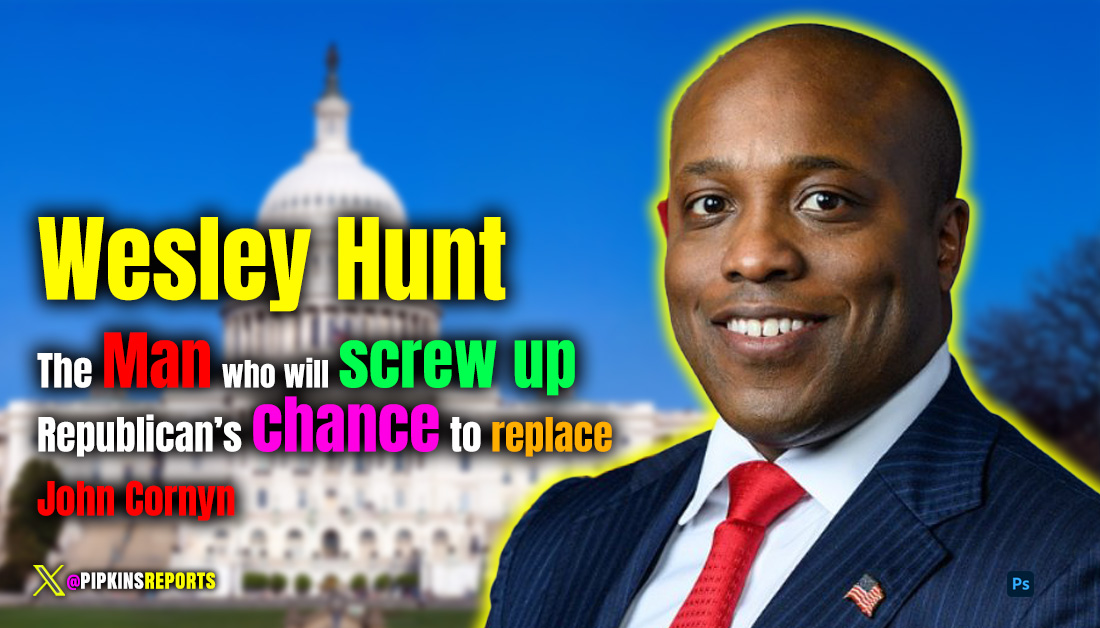
Rep. Wesley Hunt’s entry into the 2026 Republican primary for U.S. Senate in Texas introduces a new contender to an already contentious field, potentially dividing the anti-establishment vote and bolstering Sen. John Cornyn’s position despite widespread base frustration with the incumbent.
Hunt, a second-term congressman from Houston’s suburbs, announced his candidacy on Monday, positioning himself as a Trump-aligned conservative ready to take on Cornyn and state Attorney General Ken Paxton.
The move comes after months of speculation and despite pleas from national GOP leaders, including the National Republican Senatorial Committee, to stay in his safe House seat and avoid fracturing the party.
Paxton entered the race in April, framing it as a direct challenge to Cornyn’s leadership within the Senate GOP and instantly became a favorite of the Conservative (anti RINO) wing of the party.
Hunt’s decision adds complexity to a primary that has pitted the party’s populist wing against its institutional core. Conservatives have long criticized Cornyn for his close ties to Mitch McConnell and perceived reluctance to fully embrace former President Trump’s agenda. Paxton, with his record of battling federal overreach on issues like election integrity and border security, has emerged as the base’s preferred alternative. Yet Hunt—himself a vocal Trump supporter—could siphon votes from Paxton, creating a scenario where Cornyn advances on a plurality.
This dynamic raises questions about the race’s origins. While Hunt has cited personal motivations, including family priorities and a desire to address national challenges like the border crisis, his ties to Texas’s GOP establishment merit scrutiny. In 2020, as a candidate in the district once represented by George H.W. Bush, Hunt publicly honored the former president’s birthday on Facebook, praising Bush’s journey “from the Halls of Congress to the Oval Office.“
That district, TX-07, remains a touchstone for the Bush network’s influence in Houston politics, where establishment figures have historically shaped Republican primaries.
Further connections link Hunt to Cornyn directly. The two co-sponsored the Project Safe Childhood Act in April 2023, a bipartisan measure aimed at combating child exploitation—a rare point of collaboration amid broader GOP tensions.
Such alliances, while policy-driven, underscore Hunt’s navigation of both populist and institutional lanes. In a state where Bush-era influencers—consultants, donors, and operatives—still wield significant sway, it’s not implausible that surrogates from this network quietly encouraged Hunt’s bid. Reports indicate Cornyn’s reelection team has been aggressive in defining the field, including efforts to highlight Paxton’s legal vulnerabilities.
A divided primary would align with that strategy, allowing Cornyn to conserve resources while opponents expend energy on each other.
Hunt brings strengths to the race: his military background as a West Point graduate and Army veteran, his appeal as a Black conservative in a diversifying party, and his record of viral advocacy on conservative issues.
He has positioned himself as a bridge between Trump’s base and broader GOP coalitions. But his candidacy is not without vulnerabilities that could blunt his momentum.
Foremost among them is an ethics probe from June 2024, when the Office of Congressional Ethics referred Hunt to the House Ethics Committee for potentially misusing campaign funds on private club memberships totaling over $74,000. The expenditures included dues to a Houston social club and a shooting range, which investigators questioned as personal rather than campaign-related.
Though cleared in December 2024 due to ambiguities in federal rules, the episode fueled accusations of fiscal laxity—ironic for a candidate who campaigns on reining in government spending.
On that front, Hunt has drawn fire from fiscal hawks for supporting multiple continuing resolutions that raised the debt ceiling since entering Congress in 2023. Detractors, including online conservative commentators, have labeled him a “RINO” for these votes, arguing they contradict his pledges to cut waste and align with Trump’s economic vision. His attendance record has also come under scrutiny, with recent reports noting an uptick in missed roll calls as he weighed a Senate run.
Foreign policy stances add another layer. Hunt’s strong support for Israel, including sponsorship of bills like the Antisemitism Awareness Act backed by the American Israel Public Affairs Committee, has earned him plaudits from pro-Israel donors but criticism from those who view it as prioritizing foreign lobbies over domestic concerns.
In Texas, with its sizable Arab-American community, this could prove a liability.
As the primary unfolds—filing deadline in December, early voting in March—polling will clarify the splits. Early indicators suggest Paxton leads among hardline conservatives, but Hunt’s entry could narrow that gap by 20-30 points, per anecdotal assessments from GOP insiders. A fragmented field risks handing Cornyn a narrow victory, much like past Texas primaries where vote division favored incumbents.
For constitutional conservatives seeking a Senate voice uncompromised by Washington habits, this race tests the party’s resolve. Paxton’s prosecutorial edge offers a clear path to reform; Hunt’s polish might dilute it. Whether this is organic ambition or orchestrated disruption, the outcome will shape Texas’s role in a GOP Senate majority—and the broader fight to restore limited government.
* Correction. We removed reference to Mitch McConnell as Minority Leader.
